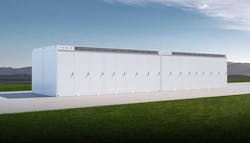We continue our article series on paving a sensible path to sustainable data centers. The U.S. Energy Information Association (EIA) lists five major sources of renewable energy. Last week, we looked at solar, wind, and geothermal energy. This week, we’ll consider biomass and hydropower, as well as options for storage solutions that can reduce the need for diesel-powered generators.
Get the full report
Biomass
Biomass accounted for 4.9% of U.S. energy consumption in 2020. Old is new again in this case because biomass was the largest source of U.S. energy consumption until the mid-1800s, largely through the burning of wood. It processes organic materials into an energy source, most often by burning but also through thermochemical, chemical, or biological conversion to fuel. Although considered one of the more exotic renewable energy sources, Canada has 70 biomass power plants that collectively produce over two gigawatts of power, making bioenergy the country’s second most-used form of renewable energy.
Biomass can prevent some types of waste from going to landfills, but extraction of appropriate materials can be expensive, and substantial storage space is required to stockpile organic material outside of the growing season.
A principal advantage of biomass is that it can generate power continuously as long as a fuel supply is available. From a renewable energy perspective, the story is more mixed. If fuel sources such as crops and trees are continuously replaced, then burning biomass would technically not increase greenhouse gas emissions. However, doing so requires that the energy source is in physical proximity to the power plant and that resources be committed to cultivating and harvesting plant matter. Biomass can prevent some types of waste from going to landfills, but extraction of appropriate materials can be expensive, and substantial storage space is required to stockpile organic material outside of the growing season. Biomass is also considered one of the more expensive alternative energy sources.
Bottom line: This is not likely to become a major alternative energy source for data centers in the foreseeable future.
Hydropower
Hydropower accounted for 7.3% of total utility-scale power in the U.S. in 2020 and 37% of renewable electricity generation. However, its share of the alternative energy pie has shrunk from 30% in 1950 as other renewable sources have grown.
In some areas, though, water is king. China has made major commitments to hydropower and currently generates about 27% of the world’s capacity. Washington state gets about 10% of its power from hydroelectric sources. The total power generated by the sector reached a record 4,370 terawatt-hours in 2020, most of it outside the United States. Projects totaling 21 GW and capacity were also put into operation, about two-thirds of them in China.
The advantages of hydropower are that it’s cheap (about 5 cents per kilowatt-hour), clean and continuous. It can provide a reliable source of power to back up intermittent sources like wind and solar. Supply can also be scaled by releasing more water stored in reservoirs and storage tanks.
But while hydropower is renewable, it isn’t necessarily environmentally friendly.
- The dams required to house turbines can significantly disrupt local ecosystems.
- Upfront construction costs are so high as to be impractical for individual data center owners.
- Power generation is also dependent upon the availability of water.
- With the west coast of the U.S. currently undergoing a historic drought, supply can no longer be taken for granted.
The large capital costs and economies of scale needed to make hydropower viable will confine its use to utilities. Companies looking to build new data centers may want to take a look at locations near existing or planned generation plants that are part of their renewable initiatives.
Batteries
Batteries are finally rounding the corner and becoming viable alternatives to diesel generators for backup power. Two major recent developments are important:
- Data center technology company Switch has said it will use Tesla Megapacks to support more than 800-megawatt hours of storage capacity in its Nevada data center campuses.
- Google is using large batteries to replace the diesel generators at one of its data centers in Belgium.
The cost of grid-scale battery farms is coming down rapidly. The U.S. EIA estimates that project costs declined by 72% from 2015 to 2019. The agency also reported that 163 large-scale battery storage systems encompassing 1,688 megawatt-hours were operating in the U.S. at the end of 2019, up 28% from a year earlier. Furthermore, it estimates that an additional 10,000 megawatts of large-scale battery storage will become operational by 2023.
Battery storage is now considered a viable alternative to generators on a short-term basis. Doubts exist, however, about how well the technology can perform in a long-term outage scenario. Most large-scale projects to date have been co-located with solar or wind energy farms. However, the EIA expects that future projects will increasingly be integrated with utility power plants.
The U.S. EIA reported that 163 large-scale battery storage systems encompassing 1,688 megawatt-hours were operating in the U.S. at the end of 2019, up 28% from a year earlier.
For the near term, batteries are best used to augment existing UPSs rather than to replace them. This allows operators to transition to cleaner energy while still maintaining a safety net.
Download the entire paper, “Getting to Green: Paving a Sensible Path to Sustainable Data Centers,” courtesy of Kohler, to learn more. In the next article, we’ll look at different paths to renewable energy. Catch up on the previous articles here and here.


